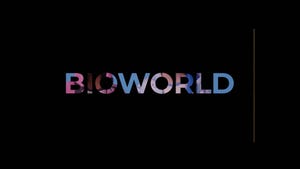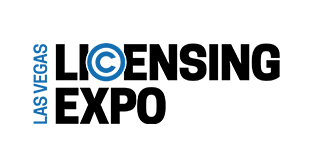The 2024 License Global Toy Forecast
From blockbusters to brand revivals and big kids, License Global breaks down key drivers for the licensed toy business in 2024.

At a Glance
- Embracing fandom
- Accessible toys
- Which new licenses and intellectual property portfolios have manufacturers signed this year?
According to data analysts Research and Markets, the global toy market is set to generate over $150 billion worldwide by 2028, growing steadily with a compound annual growth rate of 6.8%. Licensing International forecasts that licensed toys will play a critical role in that growth, generating 12% ($42.7 billion) of the total reported worldwide licensing revenue of $340.8 billion in 2022. The top-five toy companies featured in the Top Global Licensors report generated $35.4 billion in licensed goods sold at retail, each seeing positive year-over-year growth. The brand licensing sector has been a critical part of the evolution of the global toy industry, and vice versa, and as both markets continue to grow, new trends are emerging every year that hint at the future of toys worldwide.
Following the success of “Barbie,” “Super Mario Bros. The Movie,” “Teenage Mutant Ninja Turtles: Mutant Mayhem” and “Dungeons & Dragons” this year, the trend of classic and long-standing intellectual properties taking both the box office and the toy aisle by force will continue. Intellectual property owners increasingly engage fans through milestone movies, series and short-form content. Given the entertainment arms of most major toy companies, such as Hasbro, Mattel and Spin Master, we can expect to see toy brands continue to inspire more stories. Where the traditional licensing model bore a linear path (movie begets toy and so forth), the trend of toys inspiring entertainment franchises, such as games, movies and series, continues to be a source of success.
The relaunch of nostalgia products and brands from the ’80s and ’90s is also a growing trend. After all, reviving a brand or celebrating a milestone anniversary appeals to both fans of the original and new audiences. As a result, we’re seeing a wide range of brands, from Hasbro’s Furby and Bandai Namco’s Tamagotchi to Polly Pocket, Little People and Trolls, all driving sales thanks to a multigenerational appeal and the ever-present power of nostalgia. One particularly powerful trend, whether it’s steeped in nostalgia, collectability or multigenerational appeal, is kidult culture.

“Barbie the Movie” doll and car at the film’s premiere at Trafalgar Square, London
Embracing fandom
Between 2000 and 2010, society began to embrace fandom and celebrate the connection we share with stories, brands and the sub-cultures of what was once considered “geek” – such as comic books, schlocky horror movies, pulp fiction, anime and video games – transforming fandom into a global zeitgeist for the new millennium. With this new era came a shared connection that grew with increased cultural acceptance of fandom and the ability to build communities in the developing social media age. This decade brought forth the era of the fan, and with it, a new consumer segment was born – the kidult. On the surface, “adults who buy toys” seems simple enough, but brands cannot underestimate the opportunity this sub-culture represents. According to Circana, kidults were the most significant consumer segment for toys in 2022, responsible for one-quarter of the year’s total revenue ($9.3 billion) in the U.S. alone. In an interview with the Wall Street Journal, Chris Cocks, chief executive officer, Hasbro, confirmed the importance of the market, stating 40% of the company’s current consumer base is over the age of 18 . This cultural phenomenon holds such potential that it has become a part of the prominent brand owner, licensee and retail strategy worldwide and a driver in the future of toys, collectibles and games.
Accessible toys
Toys are also becoming more accessible, a movement of vital importance for the global consumer base. License Global’s Ian Hart explored how toy brands have begun to make strides toward making more accessible toys thanks to increased visibility surrounding developmental differences in kids. TheSoul Publishing has teamed up with BunMo for a special sensory toy, and LEGO continues to build out its toy therapy program. Clothing brands have joined the movement, with Thomas & Friends, the National Autistic Society and Character.com creating autism-friendly pajamas to help kids avoid sensory discomfort.

LEGO Minions at Brand Licensing Europe 2023
Which new licenses and intellectual property portfolios have manufacturers signed this year?
These are just a few core trends driving the toy market forward, and License Global forecasts licensing will continue to play a critical part in the evolution of the toy industry. When asked by License Global, 36% of licensors featured in the Top Global Licensors report planned to expand into or continue licensing within the toy market in 2024/25. Of those respondents, 50% of brand owners forecast increased engagement between licensed consumer products and consumers across categories. This sentiment confirmed the rapidly growing licensing market highlighted in both the Licensing International Survey and the Top Global Licensors report. Delving deeper into growing trends within licensing, License Global asked manufacturers to state which new licenses and intellectual property portfolios they had signed this year (so far), spotlighting Barbie, “Stranger Things” and Care Bears as the top three. These three properties were closely followed by the Disney and Marvel portfolios, Mattel’s range of properties, “Minecraft,” Warner Bros. and DC Comics’ roster of IP, Hasbro’s range of titles, Hello Kitty and “Wednesday.”
License Global, Brand Licensing Europe and Licensing Expo (along with the entire Global Licensing Group) are celebrating this in 2024 with our undercurrent theme of “Brands at Play,” a dedicated look at the concept of play with a focus on sports, gaming, toys and much more. Stay tuned to License Global for dedicated “Brands at Play” columns, supplements aimed at the evolution and innovation of core categories within the business of “play” and many more trend- and data-driven insights into the licensing world. 36% of licensors are aiming to launch toy lines in 2024/2205 $35.4B By dollar, the amount of licensed goods sold at retail by the top five toy companies worldwide 50% Percent of licensors forecast an increase in engagement for licensed goods in 2024/2025.
This article was taken from the December 2023 issue of License Global.
Read more about:
BarbieSuper MarioTeenage Mutant Ninja TurtlesDungeons & DragonsHasbroMattelSpin MasterBandai Namco EntertainmentTamagotchilittle peopleTrollsThomas & FriendsStranger ThingsMarvelMinecraftWarner Bros.DC ComicsHello KittyLicense Global OriginalGlobalDecember 2023February 2024About the Author(s)
You May Also Like








